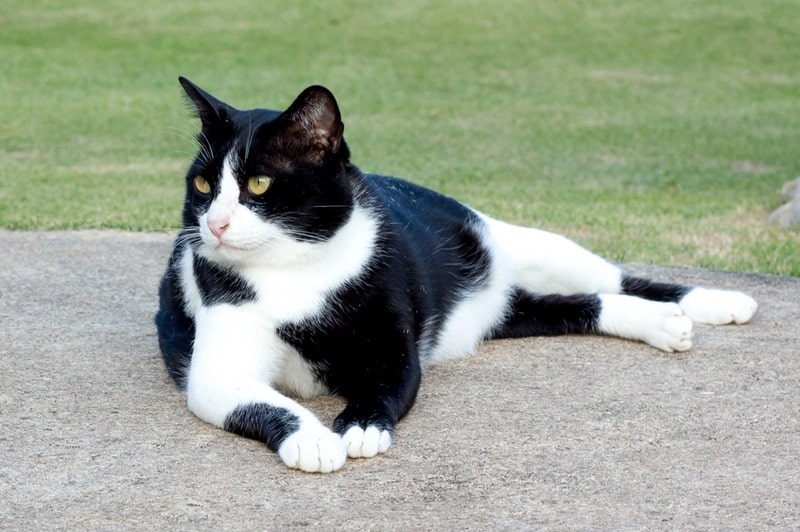Click to Skip Ahead to Names Inspired by:
Choosing a name for your cat is an opportunity to highlight your interests and those of your cat’s personality and appearance. The task can seem overwhelming because there are so many possibilities, but with a little imagination and consideration, you can choose a name that perfectly describes your new feline companion, and focusing on something like your cat’s white paws can help narrow down the ideas.
If you are looking for names for cats with white paws, we have some amazing ideas! Let’s have a look!

Cat Names Inspired by Items to Do with Hands and Feet
You’ll instinctively want to name a cat with white paws after anything related to hands or feet, so that’s what we did for you! We have several excellent names below, ranging from traditional names like Mittens or Socks to more unknown names like Creps.
- Booties
- Boots
- Butler (Butlers wear white gloves)
- Cardini (Magician with white gloves)
- Creps (UK slang for sneakers)
- Glove
- Glover
- Kicks (Slang for sneakers)
- Mittens
- Puma
- Snow toes
- Socks
- Spats (Vintage shoes, occasionally in white)
- Stockings
- Toes
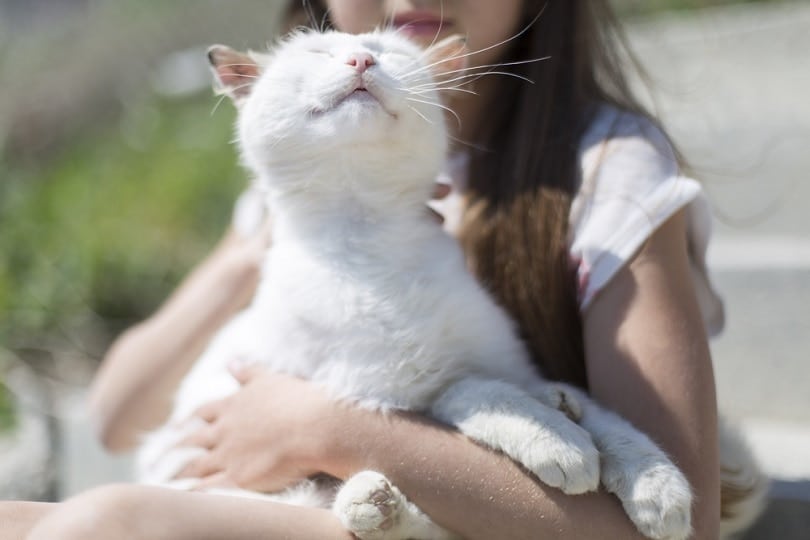
Cat Names Inspired by the Appearance of the Paws
White paws on a cat undoubtedly look like socks or boots, but if you look a bit longer, you can undoubtedly come up with something more creative and unique. For instance, a fluffy white cat’s paws look like cotton candy, and we have more great ideas below.
- Bubbles
- Cottontail
- Cotton (Cotton candy)
- Dipper
- Frosting
- Latte
- Marshmallow
- Q-tip
- Snowcap
- Truffle
Cat Name Ideas for Black and White Cats with White Paws
White paws are most common on black and white cats, and this color combination alone makes for some great name ideas. So, if you have a black and white cat with white paws, check out these names.
- Boggle (A game with black letters on white cubes)
- Bowtie
- Checkers
- Chess
- Chip
- Dice
- Domino
- Farkle (A game where six dice are thrown from a cup)
- Kismet (Dice game similar to Yahtzee)
- Mackinaw (A synonym for tuxedo)
- Orca
- Oreo
- Panda
- Penguin
- Puffin
- Skunk
- Tux
- Tuxedo
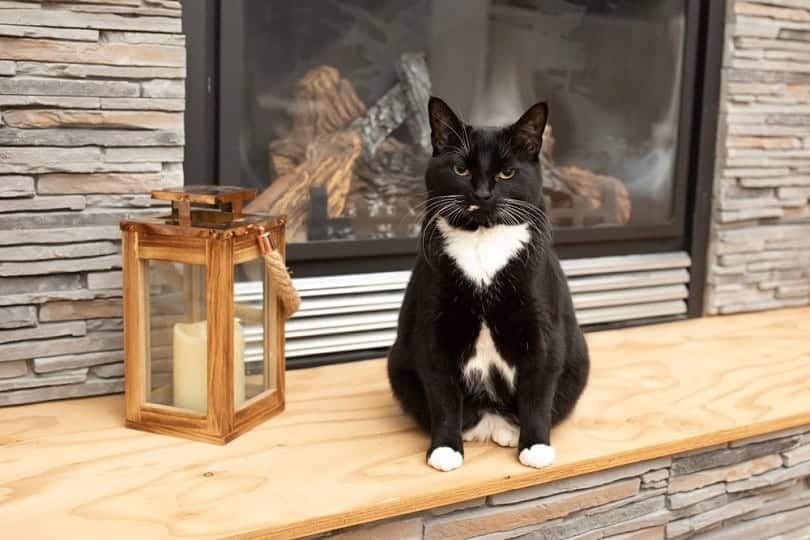
Cat Names Inspired by Fictional Characters
Your favorite fictional characters from TV shows, books, or movies can inspire fantastic names. We have some well-known characters that make great names because of their white paws, white gloves, or black-and-white coloring.
- Dinah (Alice in Wonderland kitten)
- Figaro (Pinocchio cat)
- Goofy (Wears white gloves)
- Mickey
- Minnie
- Pepe le Pew (Famous skunk)
- Pongo (101 Dalmatians)
- Suess
- Sylvester
- Tom (Tom and Jerry, Tom has white paws)
Cat Names in Other Languages
You can come up with a unique name by choosing one in a different language, so here is the word socks in many languages to create a unique but fitting name for your cat with white paws.
- Calzini: Italian
- Chausettes: French
- Iikawusi: Xhosa
- Medias: Spanish
- Meias: Portuguese
- Socken: Germany
- Sokkies: Afrikaans
- Sukat: Finnish
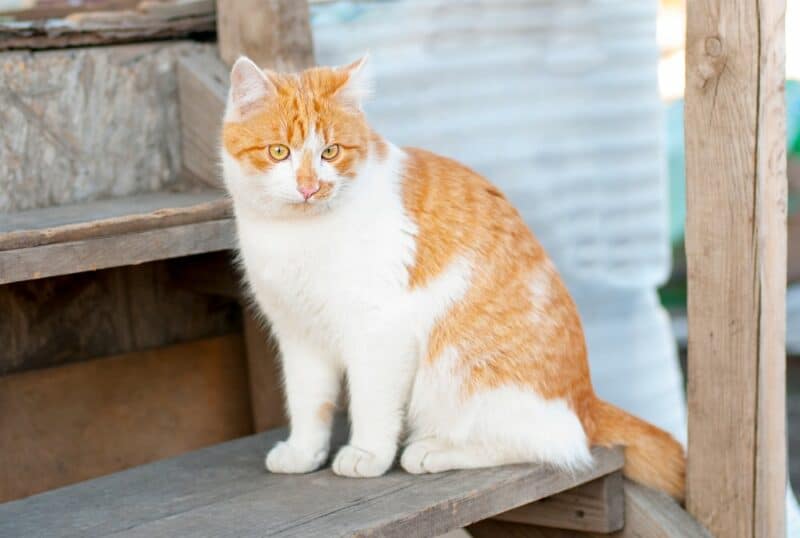
Tips for Naming Your Cat
Naming your cat doesn’t need to be overwhelming; it can be a fun and creative process. Here are some tips to help you choose the perfect name for your feline friend:
- Think About Your Cat’s Personality: Is your cat active, inquisitive, or aloof? If your cat has an entitled, confident trait, a name like Bowtie or Tuxedo could fit their personality and black and white paws.
- Consider your cat’s appearance: A cat’s physical traits can be a great inspiration for a fantastic name, especially with the addition of white paws. If you have a chubby cat, the name Marshmallow could be perfect since their white paws may resemble marshmallows and your cat’s round tummy!
- Think about your interests: Consider your favorite books, films, or characters that can inspire a perfect name for your cat. Fictional characters such as Mickey Mouse and Goofy wear white gloves, which is perfectly fitting for your kitty with white paws.
- Avoid names that are similar to family members and other pets. This can prevent confusion in the household.
- Make it unique: With so many cats in the world, it’s nice to have a unique name for your feline friend. It can make your cat feel even more special.
- Before finalizing a name, try calling your cat with it for a few days. See how it feels and if your cat responds to it.
- Remember, the most important thing is to choose a name that you and your cat are happy with. It’s your cat’s name for life, so take your time and choose wisely!
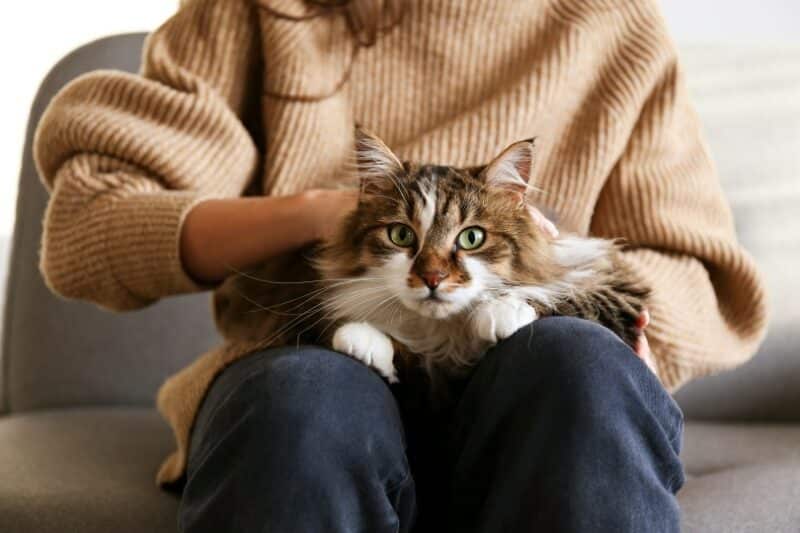
Final Thoughts
The process of naming your cat is enjoyable and meaningful. It’s an opportunity to showcase your relationship with your cat, their personality, and your interest, and naming your cat can be a fun and creative process, especially for a cat with white paws.
Sometimes, the perfect name will just come to you, so trust your instincts and go with the name that feels right for your cat. Remember, the most important thing is to choose a name that you and your cat are happy with, so have fun with the process!
Featured Image Credit: domonku, Shutterstock

